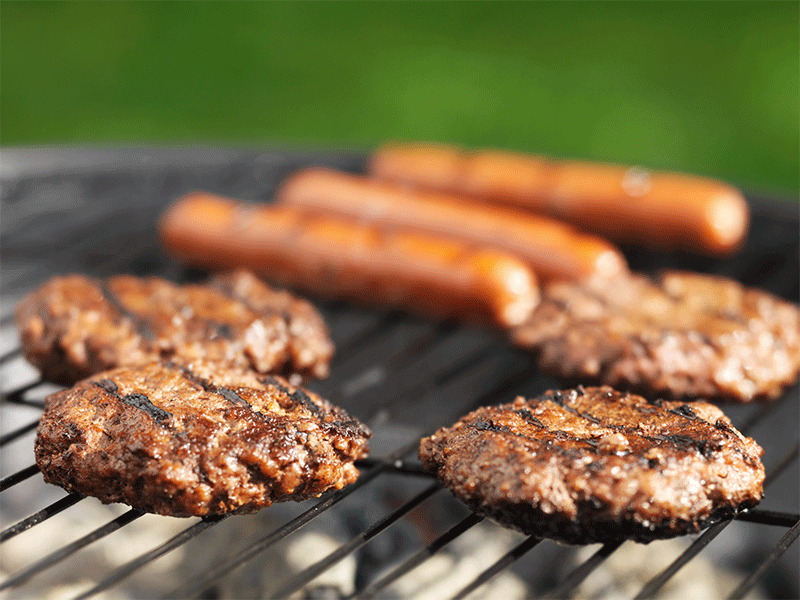Crofton Ace Hardware strives to be more than just your local hardware store. We work hard to make sure you have the tools and equipment you need both online and offline. That is why we created Tips and Tricks for you to have more resources at your fingertips. Here you will find trends, DIY home hacks, seasonal tips, and more!
TIPS & TOOLS
Common Repairs for a Broken Toilet
Some of the most common and annoying problems with your toilet are the simplest to fix yourself. It helps to know how a toilet works. It also helps to know these common indicators, so you can pinpoint which part is causing the problem. Products: Toilet Parts
FIX #1
If you’re wondering, “Why does my toilet sound like it’s running?” it could be continually in “refill” mode. Check the tube that runs from the fill valve to the flush valve. If it’s under water, trim it down.
FIX #2
Another cause of a running toilet is a loose or worn flapper. You can tell if the flapper is causing the problem if the noise stops when you jiggle the handle or press down the flapper. You can adjust the chain by a couple of links – it might be holding the flapper open slightly. Or, replace the flapper by lifting and hooking a new, correctly sized, flapper in place.
FIX #3
Another cause of a running toilet is a loose or worn flapper. You can tell if the flapper is causing the problem if the noise stops when you jiggle the handle or press down the flapper. You can adjust the chain by a couple of links – it might be holding the flapper open slightly. Or, replace the flapper by lifting and hooking a new, correctly sized, flapper in place.
FIX #4
If you checked the supply valve and supply line, and they’re working fine, you may need a new fill valve. A fill valve is simple to install. The specific instructions will depend on the product you use. This is a good time to replace an old valve with a newer water-saving device.
FIX #5
If you’re wondering why your toilet won’t flush, or why you have to hold down the handle to get it to flush check the arm connecting the flush lever to the flapper chain. Replace it if it’s broken, and reconnect the chain. Check the chain and tighten it if there is too much slack.
FIX #6
If you’re wondering why your toilet won’t flush, or why you have to hold down the handle to get it to flush check the arm connecting the flush lever to the flapper chain. Replace it if it’s broken, and reconnect the chain. Check the chain and tighten it if there is too much slack.
FIX #7
If the toilet still won’t flush, you might need to reset the tank water level. Twist the float cup on newer fill valves to adjust the water level. Or, on a traditional style float, you can bend the arm attached to the lever and the flapper chain, slightly to adjust it.
FIX #8
Find the location of the leak to diagnose where it’s coming from. Water on the floor or ceiling under a toilet, sewer smells, or damaged flooring, could mean you need to replace the wax ring under the toilet. See “How to Install a Toilet,” to learn how to complete this repair.
FIX #9
If you notice a leak between the tank and the bowl, drop some leak detection tablets into the toilet tank to check. Don’t flush the toilet. Check back after about 30 minutes. If colored water shows up between the tank and bowl, try tightening the nuts under the tank. Or, replace the gasket between the tank and bowl.
FIX #10
If you think the toilet bowl is leaking, drop leak detection tablets in the bowl. If colored water seeps through to the outside, unfortunately, there’s no way to patch it. You’ll need to replace the whole toilet.
FIX #11
If you’re replacing the flapper often, it may be drop-in toilet cleaning tabs that are corroding it. Replace your old flapper with a chlorine-resistant flapper. Or, switch to an in-bowl cleaning system.
FIX #12
When you need new parts, it helps to know the toilet’s age and brand. Look for the info stamped on the inside of the tank.
Quick Tips
5 Easy Projects to Save on Utilities
Lower Your Lighting Costs
Replace the light bulbs you use most with energy-saving LED light bulbs. Use compact fluorescent (CFL) bulbs in other fixtures until you can upgrade all your lamps to LEDs. With LED bulbs you can save over 80% in energy costs over an incandescent bulb and they can last for decades. CFLs use a fourth of the energy of incandescent bulbs and last up to 10 times longer.
Tune Up the Toilet
Toilets account for almost 30% of the water use in the average home. And, leaky toilets are the #1 source of water waste in homes. That constantly running toilet can waste 200-4,800 gallons of water per day.2 Fix the problem yourself by installing a toilet tank repair kit that features a new fill valve, flush valve, and flapper that will conserve water.
Fix Leaky Fixture
Dripping faucets can also cause a spike in your water bill. Replacing the usual suspects (the aerator and rubber washer, or a faulty cartridge) is inexpensive and the savings add up. And, install a water-saving showerhead. A WaterSense-labeled model can save the average family 2,900 gallons per year.
Hot Water Help
Your water heater may be working harder than it needs to. Reduce the temperature on the unit to about 120 degrees. Installing an insulating blanket can save about 4-9% in water heating costs if your water heater has a low insulating R-value already. If the unit is older than 12 years, you may want to look into replacing it with a new, more energy-efficient model.
Install a Programmable Thermostat
A programmable thermostat can significantly reduce energy costs, especially in the winter and summer months. Programmable models allow you to automatically adjust the temperature throughout the day, creating a specific energy-saving ‘program’ for weekdays and weekends. Some models even allow you to set preferences on the hour for each day of the week. WiFi or Bluetooth-enabled devices add extra control and convenience by letting you adjust the settings remotely from a smartphone.

TIPS & TOOLS
ACE PAint Calculator
Before you buy paint, find out exactly how much you’ll need. If more than one room is being painted with the same color, add up the total square footage.
QUICK TIPS
What’s the best bird seed to use?
Look at the package and the seed for these signs of quality. You may not be getting your money’s worth from economy seed if what’s in the bag isn’t going to get eaten by the birds.
- Treated seed
- Most seed is steamed to prevent weed germination if it spills around the feeder.
- Sunflower, Safflower, and Thistle seed
- Look for blends with a high ratio of these seeds. They’re favorites of most birds.
- Fillers that will be consumed
- Pistachios, cherries, and raisins fill more space in the bag but will be eaten by the birds. Millet, wheat, oats, cracked corn, and peanut hulls may look like they add variety, but they mostly take up space. And, many birds discard them.
- Un-Hulled seed
- Seed that still has the shell on will store longer.
- Cleanliness
- Low-quality seed can contain twigs, rocks, field run, pebbles and other debris.

GET GRILLING
July 4th Backyard Party Ideas
Music and the smell of fresh burgers on the grill waft through the air, the sun shines down on a warm summer day, and everyone is out enjoying some fresh air and fireworks. For Americans, the Fourth of July is a day to come together and celebrate independence by enjoying our freedoms. Here are some July 4th backyard party ideas for your own one-of-a-kind celebration.
GET OUTDOORS
Humans vs. Bugs – How to Win
It’s always a battle – human vs. bugs. When you’re outside, you’re bound to encounter a wide array of critters. But, when you’re inside your home, it’s a different story. After all, you want to defend your home against an invasion of insects, some of which can actually damage your home. And, with the right products from Crofton Ace Hardware, you can come out on top. Here are a few methods for keeping your home bug-free, plus a few tips for keeping them away when you’re outdoors.

